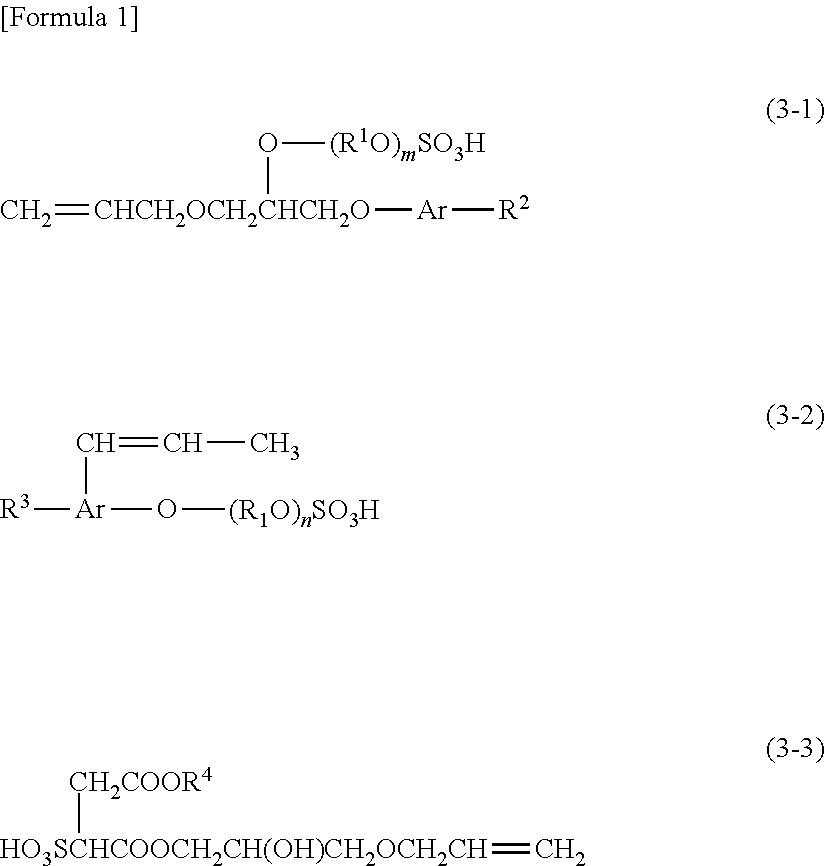Nonaqueous dispersion of resin particles
a technology of resin particles and resin particles, which is applied in the field of nonaqueous dispersion of resin particles, can solve the problems of poor dispersion stability of toner particles and insufficiently satisfactory particle size distribution or fixing properties, and achieve excellent heat-resistant stability
- Summary
- Abstract
- Description
- Claims
- Application Information
AI Technical Summary
Benefits of technology
Problems solved by technology
Method used
Image
Examples
production example 1
Production of Polyester Resin
[0320]To a reaction vessel equipped with a stirrer, a heating and cooling equipment, a thermometer, a condenser, and a nitrogen inlet tube, 286 parts of dodecanedioic acid, 190 parts of 1,6-hexanediol, and 1 part of titanium dihydroxybis(triethanolaminate) as a condensation catalyst were added and the mixture was reacted at 180° C. under nitrogen flow for 8 hours while distilling off generated water. Subsequently, while elevating the temperature gradually to 220° C. and distilling off the generated water, the reaction was carried out for 4 hours under nitrogen flow and further for 1 hour under reduced pressure of 5 to 20 mmHg to obtain a polyester resin. The polyester resin had a melting point of 68° C., an Mn of 4,900, and an Mw of 10,000.
production example 2
Production of Urethane Resin
[0321]To a reaction vessel equipped with a stirrer, a heating and cooling equipment, and a thermometer, 66 parts of 1,4-butanediol, 86 parts of 1,6-hexanediol, and 40 parts of methyl ethyl ketone were added and dissolved uniformly by stirring. To this solution was added 248 parts of hexamethylene diisocyanate (HDI) and the mixture was reacted at 80° C. for 5 hours. Thereafter, methyl ethyl ketone was distilled off under reduced pressure of 300 mmHg to obtain a urethane resin. The urethane resin had a melting point of 57° C., an Mn of 4,500, an Mw of 9,700 and a hydroxyl value of 36.
production example 3
Production of Urethane-Modified Polyester Resin
[0322]To a reaction vessel equipped with a stirrer, a heating and cooling equipment, a thermometer, and an equipment for solvent removal, 500 parts of methyl ethyl ketone and 464 parts of a polyester, “HS2H-350S” (produced by Hokoku Corporation), comprising 714 parts of sebacic acid and 1,6-hexanediol and having a hydroxyl value of 32, were added and the mixture was dissolved at 80° C. To this was added 16 parts of 2,6-tolylenediisocyanate and, after the mixture was reacted at 80° C. for 5 hours, methyl ethyl ketone was distilled off under reduced pressure of 300 mmHg to obtain a urethane-modified polyester. The NCO content of the urethane-modified polyester resin was 1.14 wt %.
PUM
| Property | Measurement | Unit |
|---|---|---|
| Temperature | aaaaa | aaaaa |
| Temperature | aaaaa | aaaaa |
| Fraction | aaaaa | aaaaa |
Abstract
Description
Claims
Application Information
 Login to View More
Login to View More - R&D
- Intellectual Property
- Life Sciences
- Materials
- Tech Scout
- Unparalleled Data Quality
- Higher Quality Content
- 60% Fewer Hallucinations
Browse by: Latest US Patents, China's latest patents, Technical Efficacy Thesaurus, Application Domain, Technology Topic, Popular Technical Reports.
© 2025 PatSnap. All rights reserved.Legal|Privacy policy|Modern Slavery Act Transparency Statement|Sitemap|About US| Contact US: help@patsnap.com

